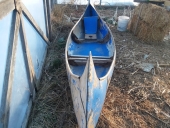
 1
1



























We had a much, much warmer winter than normal. We actually expected more insects this year not fewer. I had been hoping to purchase two bee nucs this year but all the apiaries in the area saw huge losses of hives over the winter. Too warm, maybe? And those who are creating new hives now are seeing unhealthy comb patterns.I wonder if the people who did those videos could do us one where they look for the critters that usually eat these bugs? Another video on analysing what's changed in the bugs food sources. And yet another one on what surrounds them - like up their watershed, pollutants upwind, new weather patterns in the winte r (too cold, too hot), stuff like that.
Maybe they all moved west? We have a very healthy population this year... a lot more than years previous.








 1
1




The real world is bizarre enough for me...Blue Oyster Cult
 1
1













List of Bryant RedHawk's Epic Soil Series Threads We love visitors, that's why we live in a secluded cabin deep in the woods. "Buzzard's Roost (Asnikiye Heca) Farm." Promoting permaculture to save our planet.




I would imagine that the areas that are experiencing draught conditions are seeing a reduced amount of insect life.
The warm winter weather caused by the climatic change going on should produce more insects not reduce them.
That means that the reduction is most likely the result of other conditional changes such as the draught's reduction of water, the one thing life can't do without for any length of time.

|
I think she's lovely. It's this tiny ad that called her crazy:
The new kickstarter is now live!
https://www.kickstarter.com/projects/paulwheaton/garden-cards
|






